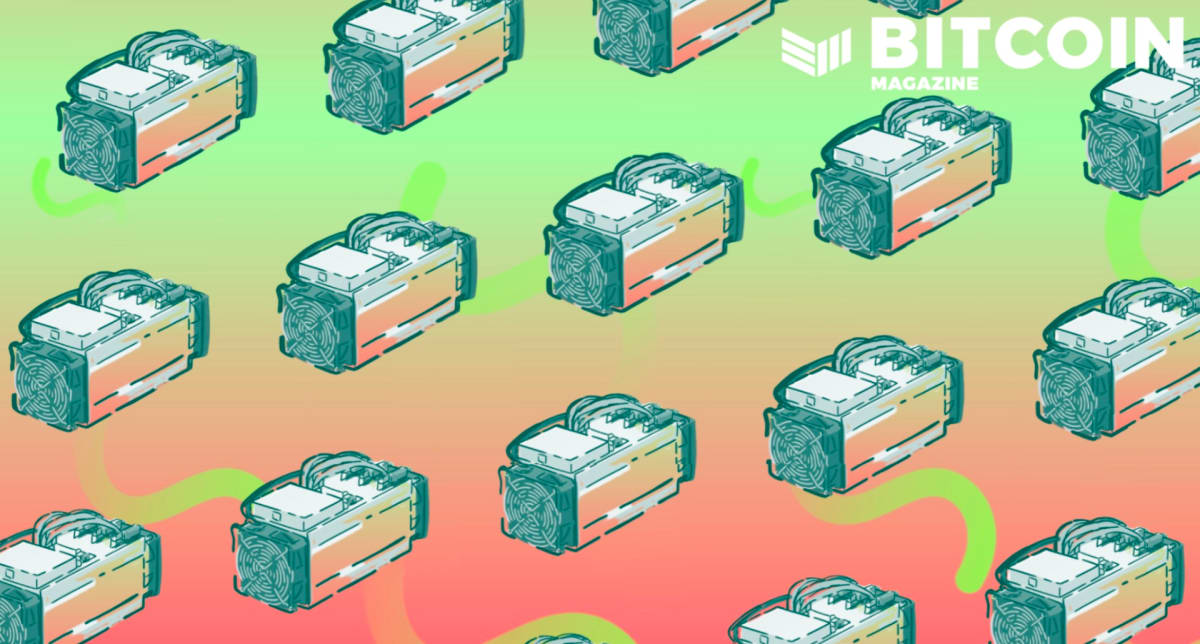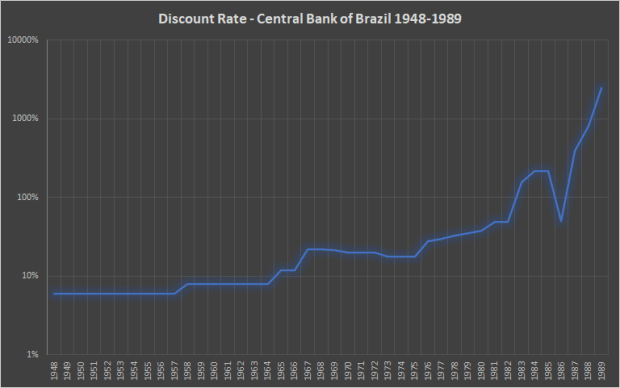Economically Incentivized Innovation Sets Bitcoin Apart: Unitary Money
The specific attributes of Bitcoin create an environment poised for incredible leaps in innovation.
Introduction
Several people have recently brought up the contention that bitcoin, as a deflationary money, cannot truly function as real money. This was brought to the surface again by Natasha Che (@RealNatashaChe) in a long Twitter thread.
These arguments against a deflationary currency all condense to a belief that, since the money will have more purchasing power tomorrow, no one will spend it today. While this may be a reasonable assumption when a money which is normally inflationary enters a deflationary period, I contend that it does not apply to bitcoin which is always deflationary.1
Here we will explore the true steady state of a bitcoin standard economy and the crucial economic pressures it provides to maintain an ideal economic state. There will be transitory effects in the transition from fiat to bitcoin, but those effects are in no way illustrative of the long-term steady state.
“Bitcoin Audible” highlighted this thread and picked her tweets apart point by point on the individual person level and microscale regarding day-to-day purchasing.2 On his podcast, Guy Swann phrases it this way, “If you don’t have more stuff to buy, the value of the money doesn’t go up.”
People need to eat and have shelter, so they must and will spend for that. Absolutely. No argument there. Now let’s step back and look at this on a macro level. In order for a full economy to exist, people need to invest and innovate as well. Inflation is not the only stimulus that can support innovation and believing that inflation is required is perhaps the greatest folly of the fiat system.3
Given all these advantages and more (discussed below), I proffer that bitcoin is harder than the “hardest” money we have had available to us to date. It deserves its own classification in the monetary system: A unitary money, the only money that is always disinflationary and absolutely limited in supply, allowing the maintenance of the strongest long-term economy possible.
The Crucial Distinction Of A Unitary Money
The creation of bitcoin required several important and deep innovations, but perhaps the most important is the creation of absolute and durable digital scarcity. To represent this concept, I propose bitcoin be referred to as its own class of money: unitary money.
There are several definitions of money, but most include (1) a store of value, (2) a medium of exchange and (3) a unit of account. Inherent in these properties is that money be divisible, fungible, portable, durable, acceptable, uniform and limited. Hard (or sound) money ratchets up the difficulty of the “limited” condition. In order to be a unitary money, then, we must further increase the stringency of the “limited” condition to “fixed,” such that there is an absolutely scarce supply. We must also strengthen the “divisibility” property to allow for a costless division to arbitrarily minute units.
Therefore, by unitary money, I mean that it does not matter how many “bitcoin” are in existence, we can conceive it as only one “bitcoin” being in existence. The initial 21 million coins is merely the first level of division. Satoshi could just as easily have made one bitcoin that has 2.1 quadrillion sats, as there can be 21 million bitcoin with 100 million sats each. The divisions are merely to help our human brains interface with the system.
At first this may seem like a meaningless point. But many people have pointed out aspects of this with statements and memes referring to “infinity / 21 million” or “everything / 21 million.” And like many others, I believe the reframing is necessary for truly understanding how a monetary unit with fixed supply (and arbitrary divisibility) can function outside of the monetary theories which have developed without such an important tool.
So, we can reframe it as “everything / bitcoin,” or “everything / one.”
Productivity And Innovation In A Fiat Or Gold Economy
“The opening up of new markets and the organizational development … illustrate the process of industrial mutation that incessantly revolutionizes the economic structure from within, incessantly destroying the old one, incessantly creating a new one … [The process] must be seen in its role in the perennial gale of creative destruction; it cannot be understood on the hypothesis that there is a perennial lull.” — Joseph Schumpeter, “Capitalism, Socialism and Democracy,” 1942
As Prateek Goorha and Andrew Enstrom mention in “The Schumpeterian Bitcoin Cycle,” Joseph Schumpeter “would have loved Bitcoin.” They then go on to describe how Bitcoin functions under the Schumpeterian business cycles. In addition to his work on business cycles, Schumpeter was also known for his work on innovation.
Under Schumpeter’s theory of innovation, it is the entrepreneurial class that is primarily responsible for change and economic advancement. Distilled down to the fundamental aspect, the entrepreneurial pursuit of profit drives innovation, resulting in creative destruction of existing structures and driving economic progress.
When a particular business initially adopts an innovation which gives it an edge over its competitors, that business is able to absorb the bulk of the gains of that innovation. Over time, however, the innovation (or others like it) is adopted by the bulk of the competition and becomes standard. However, society as a whole should be better off, since the industry as a whole should be able to produce more with less.
Under a fiat standard, or even a non-unitary, hard-money standard, productivity gains will accrue first to the newly created money. In fact, under an ideally executed fiat system, this productivity increase is exactly what the fiat seigniorage is attempting to capture.4 If you assume a society-wide, net productivity increase of 2% in one year (above any aggregate demand changes), then you would expect the price level to fall by 2%. So you should expect that the increases in productivity would result in cheaper goods and services — and a cheaper cost of living. Increasing the money supply by 2%, then, would hold prices stable as denominated in the fiat currency, with the newly printed money essentially absorbing the entire productivity gain of the society.
Of course, this is a simplistic view since productivity gains are not homogenous throughout an economy. In addition, that ideal situation where the newly created fiat absorbs the aggregate innovation can only exist on a knife’s edge. If too much fiat is generated, then the new currency units begin to absorb the already existing aggregate value of the society through inflation.
So far, this is essentially just a restatement of the Cantillon effect, but it is important to link the newly generated currency units with the aggregate increase in societal productivity.
Under a fiat standard, innovation is clearly incentivized simply because participants know that, in order to resist the inflationary force, one must generate productivity gains just to keep up. These “productivity gains” sow the seeds of the downfall of the fiat system. First, genuine productivity gains put pressure on the system to inflate faster, to keep up with the downward price pressure they generate. Second, many productivity gains are false, they exist only because of distortions due to the inflationary environment itself. We’ve all witnessed this: Textbook price increases that are wildly out of proportion to the value they provide (if any), trivial upgrades to consumer goods to justify this year’s model and planned obsolescence. Over time, these two aspects will eventually conspire to accelerate boom-and-bust cycles and may finally cause a systemic readjustment (or collapse).
Long-term average growth in productivity is between 1.5% (total factor productivity from the Congressional Budget Office) and 2% (Schumpeter), though others have placed this as high as 4%. The average annual increase in gold supply is about 1.5% (stock-to-flow ratio from InGoldWeTrust.report), but it has been much higher at times and can increase if more energy is spent to mine it faster.
So even with the best economic standard we’ve had to date — the gold standard — fully enforced, is quite close to parity for society and will still suffer from the Cantillon effect. As productivity increases, supply increases equally, so the benefits are captured entirely by the new money generator (aka the government). They’re the only ones to benefit from the new productivity. Only the fluctuations and mismatches cause the increases in productivity to reach the general population stochastically and inconsistently (mostly to the ultra rich).
Productivity And Innovation Under The Bitcoin Standard
“[Bitcoin] goes up because of the productivity of the civilization, or it goes up due to the productivity of the network of people who adopt the asset … if hypothetically everyone in the world uses bitcoin, 100% bitcoin, and every other currency disappears, there’s no inflation. Then bitcoin will appreciate in value with the productivity of the civilization, and you know, maybe with the differential utility if there’s any other asset that people might be using. But if bitcoin is the only asset, and is the only currency, then it’ll appreciate in value every year with the true productivity growth of the human race. It’s 4%, 3%. So what you’re looking at long-term, is long term it’s going to go up 3% to 4% a year, but that may be 30, 40, 50 years out.” — Michael Saylor, “What Bitcoin Did Podcast #431,” on December 2, 2021, about 1:14:30.
So, how does innovation work under a unitary monetary standard?
I am now only considering a system that has passed fully into a unitary monetary standard: i.e., post-hyperbitcoinization. Clearly, during the phase where the new unitary monetary standard is coexisting with preexisting fiat standards, holding the unitary money is probably the best strategy for the vast majority of society.
Once the unitary standard is fully in effect, however, things change. It is still true that simply holding one’s money would be a long-term winning bet, since its purchasing power will increase over time. But it won’t have the outsized returns and volatility one sees during the transitionary period — volatility is likely to fall to much lower levels, and the returns will settle down to the long-run increase in productivity of society, or about 3% per year.
The fiat argument, then, is that because the money is constantly increasing in purchasing power, the most rational move would be to simply refuse to spend one’s money.
Given two seconds of thought, this is clearly false even in a universe of perfectly rational actors. If every actor hoards their money because they believe it will be worth more tomorrow, then it won’t be worth more tomorrow because there will be no increase in productivity. So, the rational thing at that point will be to invest in productivity increases.
But the situation is even clearer than that. Even if there was an actor that really did want to hoard all their money, they could not. Because of the universal need to consume (you need to eat, possess shelter, do something with your time, etc.), and because of entropy, no actor can refuse to spend their money forever.
And, of course, the clear fact is that humans aren’t slavishly rational actors.
- Individual actors are indeed not strongly incentivized to innovate. This is fine. Most “innovations” are indeed worthless. As a society, we really do only want innovations that increase real productivity.
- Only innovations expected to have a chance to exceed the society-wide growth rate are worth pursuing. But the impact of an innovation decays with time, so what would be a huge benefit on day one, may only be providing a small net increase in a few years.
- As we’ve seen, the long-term, society-wide growth rate is about 1.5% to 4% annually.
- So the purchasing power of a unitary money will only be increasing by about 2% per year, as all of society’s productivity gains accrue to all holders of the money.
- If a specific innovation has a reasonable chance of providing a 4% return, of course, one would invest in that.
The fundamental problem with this contention is that it is a transitory effect, that is being extrapolated to a universal effect. But in reality, the system will eventually find a new equilibrium (post-hyperbitcoinization).
Imagine an economy where everyone refuses to spend their bitcoin, because everyone believes that it will be more valuable tomorrow. Ignoring the fact that everyone in this economy is now bored and starving, the economy is now no longer growing … actually, due to entropy (depreciation, wear and tear, etc.), it is shrinking! But every actor in the economy can see this, since the money itself is very responsive, so they actually see the opposite of what they expect. As soon as the actors see the value of their saved stash losing value, they will quickly move to spend their money in ways that will increase value.
The stable equilibrium, when accounting for the fact that humans as a species rather dislike boredom and starvation, will actually be on the side that supports sustainable (not excessive) growth.
Unitary Money — The Bitcoin Standard — The Only Path Forward
We have compared the costs and benefits of a fiat standard, gold standard and bitcoin standard. From the individual level to the macroeconomic scale, the benefits to the people and to long-term stability are all overwhelmingly in favor of a bitcoin standard. Indeed, when you realize that a gold standard is still subject to the Cantillon effect, no economic standard in our history has truly been sustainable for civilization. They all have a limited lifespan once the issuer realizes their ability to debase and inflate the currency for their benefit. That marks the beginning of the end for every past economic standard.
This is not possible with the bitcoin standard. It cannot be corrupted or co-opted. For all the reasons I’ve discussed here, this is why I feel compelled to consider bitcoin in a monetary class of its own. Human civilization has never before had the opportunity to have a truly sustainable monetary standard.
HODL for now and during the remainder of the transition to hyperbitcoinization. Promote bitcoin as the new monetary standard whenever and however you can. Then sit back and enjoy the benefits of truly free, incorruptible money in the future. And fret not, humanity will still be innovating, though fusion power may remain 25 years out for the foreseeable future.
The author thanks Mike Hobart, Guy Swann and Bradley Rettler for their assistance on this article.
1 There is a distinction between price inflation/deflation and supply inflation/deflation. Often these are conflated, creating much of the confusion here.
2 “Bitcoin Audible” by Guy Swann, Episode #553, August 23, 2021.
3 In reality, this is debatable, but the dominant theory is that inflation stimulates innovation. Exorcising this particular demon is beyond the scope of this article.
4 Seigniorage is when the cost to produce money is lower than the face value of that money, allowing the government to “profit” by the difference.
This is a guest post by Colin Crossman. Opinions expressed are entirely their own and do not necessarily reflect those of BTC Inc or Bitcoin Magazine.









